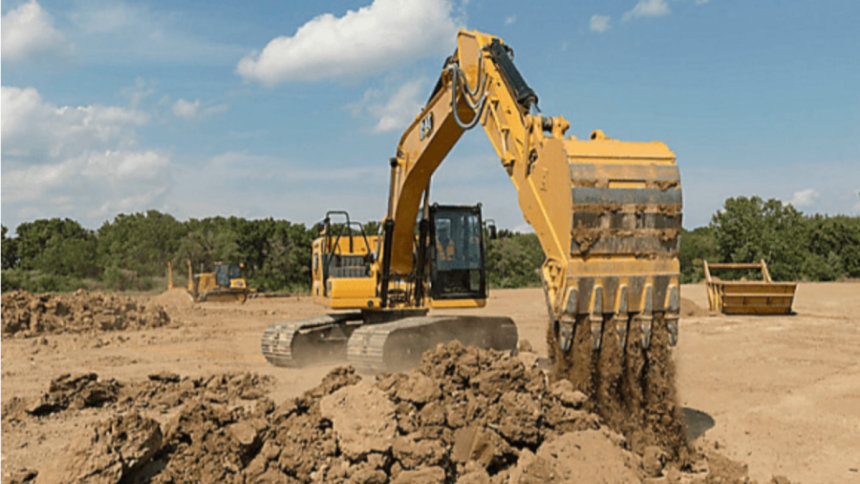1. Introduction
The construction industry has long faced challenges in navigating diverse terrains, particularly in areas where land meets water. Traditional equipment often falls short in tackling wetlands, swamps, and shallow water bodies effectively. This is where amphibious excavators step in, offering unparalleled versatility and efficiency. These specialized machines are transforming construction practices by enabling seamless operations in challenging environments.
2. What is an Amphibious Excavator?
An amphibious excavator is a versatile heavy-duty machine designed to perform seamlessly on both land and water. Unlike traditional excavators, it features pontoon-style undercarriages that enable it to float and navigate effortlessly through waterlogged or marshy terrain.
By combining the capabilities of a conventional excavator with innovative adaptations, amphibious excavators bridge the gap between land and water construction, providing solutions to complex engineering challenges.
3. Types of Excavators
Amphibious excavators are part of a broader family of excavators, each designed for specific applications.
- Standard Excavators: Ideal for general-purpose digging and material handling on solid ground.
- Long-Reach Excavators: Designed for projects requiring extended reach, such as riverbank stabilization.
- Dragline Excavators: Used primarily in large-scale mining and dredging projects.
- Amphibious Excavators: Specialized for wetland, swamp, and shallow water construction.
Amphibious excavators stand out for their adaptability, capable of performing tasks in environments unsuitable for other types of excavators.
4. Core Features and Capabilities
What makes these excavators revolutionary are their unique features:
- Pontoon-Based Undercarriage: Provides buoyancy and stability in water.
- Adjustable Track Widths: Enhances maneuverability in varying terrain conditions.
- Corrosion-Resistant Materials: Ensures durability in water and wet environments.
- Extended Booms and Arms: Increases the operational reach for dredging and excavation tasks.
These features enable the excavators to perform complex tasks, while maintaining high operational efficiency.
5. Applications in Land & Water Construction
Amphibious excavators excel in a wide range of construction scenarios, making them indispensable for modern engineering projects.
- Wetland Restoration: Rebuilding ecosystems by dredging and clearing invasive vegetation.
- Flood Control: Constructing levees, embankments, and drainage systems to manage water flow.
- Dredging Operations: Removing sediment and debris from water bodies to maintain navigable waterways.
- Bridge and Dock Construction: Excelling in foundation work and material handling in aquatic settings.
- Pipeline Installation: Facilitating the placement of pipelines in marshy or submerged areas.
The versatile applications demonstrate the value of these excavators in projects where conventional equipment cannot perform effectively.
6. Specialized Attachments
The versatility of amphibious excavators is further enhanced by their ability to accommodate a variety of attachments:
- Hydraulic Dredge Pumps: Ideal for sediment removal and slurry transportation.
- Mowing Buckets: Designed for vegetation cutting and clearing in wetlands.
- Pile Drivers: Used in foundation work for docks and bridges.
- Clamshell Buckets: Useful for precise material handling and excavation tasks.
These attachments allow operators to tailor the machine’s capabilities to specific project needs, improving efficiency and reducing operational costs.
7. Equipment Mobilization
Transporting amphibious excavators to remote or challenging locations can be daunting, but modern designs have streamlined this process:
- Modular Pontoons: Detachable pontoons simplify transportation and assembly on-site.
- Compact Transport Dimensions: Allows the equipment to be moved easily on standard trailers.
- Self-Propulsion Capabilities: Some models are equipped with propulsion systems, enabling them to traverse water bodies independently.
Efficient mobilization reduces downtime and ensures timely project execution, a critical factor in construction projects.
8. Maintenance Requirements
To maximize the lifespan and performance of amphibious excavators, regular maintenance is essential:
- Pontoon Inspection: Routine checks for leaks and corrosion to ensure buoyancy and structural integrity.
- Hydraulic System Maintenance: Ensuring smooth operation of booms, arms, and attachments.
- Track Cleaning and Lubrication: Preventing debris buildup to maintain mobility in wet and muddy terrains.
- Engine Servicing: Regular checks to ensure optimal performance in varying environmental conditions.
By adhering to maintenance schedules, operators can minimize downtime and extend the equipment’s operational life.
9. Environmental Considerations
As construction activities increasingly emphasize sustainability, these excavators play a vital role in minimizing environmental impact:
- Reduced Soil Disruption: Their ability to float reduces ground pressure, minimizing damage to fragile ecosystems.
- Efficient Sediment Removal: Allows for precise dredging, maintaining ecological balance in water bodies.
- Low Emissions Models: Newer designs incorporate fuel-efficient engines to reduce carbon footprints.
- Support for Conservation Projects: Used in wetland restoration and other environmental rehabilitation efforts.
The considerations make these excavators a sustainable choice for eco-conscious construction projects.
10. Conclusion
Amphibious excavators are redefining the possibilities in land and water construction. Their innovative design, adaptability, and specialized features have made them indispensable for projects in wetlands, swamps, and shallow water bodies.
From wetland restoration to flood control and dredging, these machines bring efficiency, precision, and sustainability to the forefront of construction practices. With advancements in technology and attachments, their capabilities continue to expand, addressing the evolving demands of the construction industry.
Investing in amphibious excavators is not just about meeting today’s challenges but preparing for a future where versatility and sustainability are paramount. As they revolutionize how we approach construction in diverse environments, amphibious excavators stand as a testament to the ingenuity and innovation shaping modern engineering.
Lynn Martelli is an editor at Readability. She received her MFA in Creative Writing from Antioch University and has worked as an editor for over 10 years. Lynn has edited a wide variety of books, including fiction, non-fiction, memoirs, and more. In her free time, Lynn enjoys reading, writing, and spending time with her family and friends.















